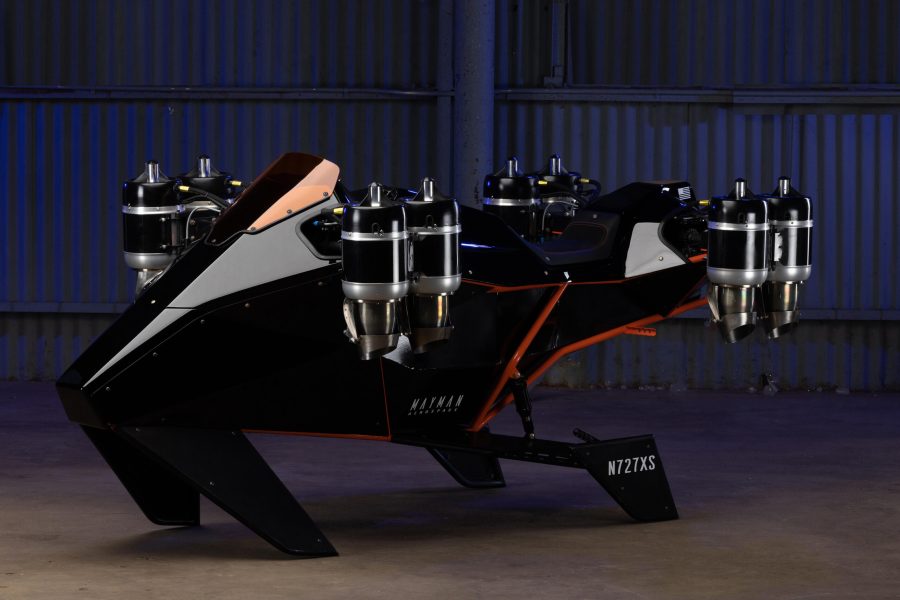The flying motorcycle is one of those technologies, like the flying car and the (real) hoverboard, that has been on the edge of becoming a reality for what seems like eons, but never seems to come to fruition. Numerous companies have shown models, concepts, and even working prototypes, but the day when you can walk into your local Honda or Ducati dealership and fly out on a CBR Hover or Desmo Gyro are still seemingly years away. However, one company that claims to be close to a commercially available flying motorcycle product is Mayman Aerospace, with their Speeder.
If their website is to be believed, Mayman is about to launch a vehicle that is “a new class of aircraft” that will “disrupt aviation forever”. The Speeder is not much larger than a motorcycle, is powered by eight turbines in four pairs, can take off and land vertically (VTOL), and can be piloted remotely if desired.
Maymantouts the Speeder as a potential firefighting tool, medevac platform, military transport, and cargo carrier. The P2 version represents the potential flying motorcycle configuration, described as an air utility vehicle (AUV) that can lift 1,000 lbs (453 kg), and, in cargo mode, can fly 500 mph (804 km/h).
Maymanhopes to begin remotely piloted test flights in the third quarter of 2022, with piloted tests in the fourth quarter,flyingmag.com reports. The company operates under the umbrella of JetPack Aviation Corporation, a pioneer in jet pack aviation headquartered in Los Angeles.
Certainly, if a company like Mayman could produce a viable, relatively inexpensive, production ready flying motorcycle today, there would still be regulatory hurdles to jump before any Jane and John Doe can fly out of their garage into the wild blue yonder. Mayman touts their close working relationship with the FAA as one of their strategic advantages, but, just as ground-based personal mobility has required a re-think of certain transportation laws and regulations, a flying motorcycle would certainly be “disruptive” in terms of licensing and the rules surrounding low-altitude air travel.







